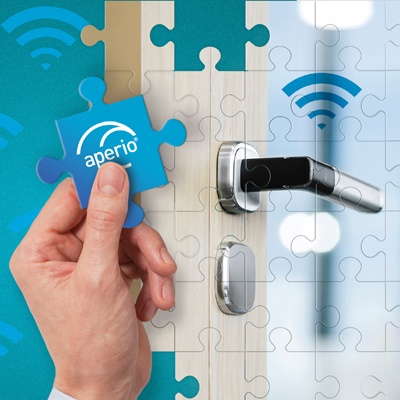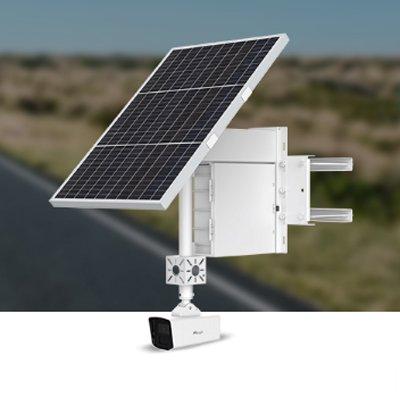The cannabis market is one of the fastest-growing markets. By the end of 2025, Grand View Research estimates that the global legal cannabis market will grow to US$ 66.3 billion. Its increasing legalisation and use in the medical field, as well as recreational applications, are some reasons driving its growth.
Cannabis market
However, there are stringent rules and regulations regarding the products’ cultivation and sale. According to Adherence Compliance, a Denver-based company that specialises in cannabis compliance, about 76 percent of all cannabis operators fail at inventory requirements, 72 percent fail security and surveillance requirements, 67 percent are unsuccessful with labeling and packaging, 64 percent on business records and 53 percent fail on transport and storage.
What do cannabis operators need to know before they grow? Blake Albertsen, Salient Regional Sales Manager for the Pacific Northwest, helps operators navigate regulations, a security plan, and the importance of a Clean Green Certified security manufacturer and integrator.
Regulations
From seed-to-sale, all activities that occur with each cannabis plant needs to be tracked and captured on security video
From seed-to-sale, all activities that occur with each cannabis plant needs to be tracked and captured on security video, including the interaction between an employee and a plant. Even plant waste and dead plants must remain under surveillance at all times.
According to Jeff Hubbard, the Owner of Constellation Cannabis, one of the largest cannabis grow facilities in Washington, before Constellation could begin growing cannabis, they needed a licence for the facility and then to develop an operating plan, specifically designed for the Washington State Liquor and Cannabis Board (LCB). The LCB is responsible for the licencing of establishments that sell and grow any type of alcohol and cannabis.
Operational blueprint
The operational blueprint delineates where, in the building, seeds are stored, where cannabis grows, where the flower room is, and where the concentrates production and processing takes place. In addition, a waste quarantine room is required in case a plant dies.
“If we have a plant that dies, we can’t just take that plant and throw it in the compost pile; the plant is tagged, so we can scan the plant; we notify the LCB that the plant has died, and we remove the plant from our gardens,” Hubbard says.
“But it needs to sit in our quarantine space for 72 hours because that gives the LCB three days to come out to our farm and do a spot check inspection,” says Hubbard, adding “Until compliance of all requirements were met, Constellation could not grow a single plant, and thus, was not able to generate revenue, says the Salient Systems case study.”
State-specific cannabis regulations
“Every U.S. state, county, and city can potentially be different when it comes to regulation,” says Albertsen, adding “Within a county or a city, there can be even more requirements. Even in Canada, there are different cannabis regulations within each province. Knowing where you are growing and where you are selling is critical even before you open your retail location or a grow facility.”
At Salient Systems, we can help cannabis operators follow regulations within each state, city, and county"
Albersten further said, “At Salient Systems, we can help cannabis operators follow regulations within each state, city, and county, and help them make the right decision when it comes to their security needs. We have the ability to help operators to stay compliant and follow regulations. We can help clients make the best decisions.”
Video surveillance footage maintenance period
One of the strictest regulations with regards to security is the amount of days that video surveillance footage must be maintained.
The US State of California, for instance, requires:
- Retention time for video footage is 90 days
- Security cameras must be placed at all entrances and exits, and must record from indoor and outdoor vantage points for 24 hours a day, with no interruptions, even during extreme weather conditions
- A minimum camera resolution of 1280 x 720 pixels
- No less than 15 frames per second (fps)
- Cameras and storage must be IP compatible
- Fencing and gates surrounding growing operations must be monitored at least 20 feet beyond the perimeter
In the State of Washington:
- Footage must be retained for 45 days on-site
- 24-hour continuous recording
- Minimum camera resolution of 640 x 470 pixels
- No less than 10 fps
In Canada:
- Footage must be retained for 1 year
- 24-hour continuous recording
- Minimum camera resolution of 720 pixels
- No less than 15 fps
Designing security plans
Navigating strict regulations requires a well-thought-out plan and a flexible storage solution
There are various other security requirements, such as implementing a functional alarm system, security personnel must be stationed during all hours of operations and proper notification to appropriate agencies in the event of a theft, loss or breach.
Navigating strict regulations requires a well-thought-out plan and a flexible storage solution that allows for enterprise surveillance systems that provide scalability, the necessary capacity to store video footage, and remote monitoring capabilities.
According to Albertsen, the following are key elements in a security plan that all growers or those looking into opening retail locations should consider:
- Seek guidance from a professional in the industry before getting started with the security plan - “Whether it’s a consultant or a professional who has experience with security, security products, video, or designing a plan, it’s very important to use an experienced individual for many reasons,” said Albertsen, adding “One of them is to help with the regulations and requirements.”
- Cover all aspects of the building - “There are more areas that need to be covered, as well,” Albertsen says, adding “These include rooms, all perimeters, lobby spaces, and break rooms. Surveillance isn’t the only security system you might need to cover all those areas, access control systems, perimeter security technology (such as fencing), and an intrusion detection system, may be required by regulations.”
- Video surveillance is a must; the security plan must be designed around it - “Video surveillance is a piece of the puzzle that is in every single regulation, whether it’s retention of 45 days, 90 days, or 120 days,” says Albertsen, adding “In order to achieve retention, there are a number of things that must be done, such as running calculations on camera types, frame rates, or minimum resolution. Typically, many off-the-shelf products do not meet those regulations because they might have a small amount of storage when a 40tb drive is needed to meet retention requirements.”
- Find a security solution that is camera agnostic and provides cameras that fit the requisite surveillance needs - “No matter which area you’re trying to cover, both in grow areas and dispensary environments, you want to make sure that the security system covers head, hands, and feet in every surveillance camera. You want to monitor who is touching the plant, if the product has been placed somewhere else, such as pockets or in backpacks. You want to ensure there is nothing missing at the end of the day,” Albertsen notes, adding “A video management system will allow you to track a plant’s movement and the employees who work with plants throughout the facility, as well as an audit trail”.
- Controlling access to the video is critical, too - “There are multiple ways to search for video footage: by motion, event-based searching, and thumbnail searching, which really makes investigations faster and more efficient. With the Salient Systems CompleteView 20/20, we can go back to video logs to check when video recording started and when there was motion detecte Even if there is continuous recording, we can set the video search on ‘alarm event’ to make sure we’re capturing those images by date, time, and even hourly”, stated Albertsen.
- Special Features are A Must – Albertsen said, “Geo-tracking is based on maps, so we can input a map, either based on a Google, Bing, or .jpg map file, of the facility’s layout. In the GeoView, we can highlight specific geographical areas where an incident took place, for instance. We can enable cameras to be focused on a view, allowing investigations to be run on that view. It’s a very easy and quick way to go back and review video footage of specific cameras.”
- Seed-to-sale tracking is critical – Albersten points out, “Ensure that you have your seed-to-sale system in place to monitor the seed during the plant’s growth and then final product for sale in the market. You need to place a tracking on the plant so that it is tracked throughout the process. That includes fertilisation, production, processing, packaging, and sale.”
- Easy access to sites via apps, such as iOS and android device - “Even when you are not physically there, you want to know if there’s an event going on at your site, who’s there after hours or if there’s an incident,” Albertsen said, adding “You can have the option to monitor what is happening through your mobile device before you drive out to the facility.”
- A web login for the video - According to Albertsen, “There are two options: a web interface or software. A web interface is designed for clients who want to log in quickly and easily into their facility’s system, he notes. Another option is loading software onto PCs to access a facility’s system. Both options provide cannabis operators with easy access to their facilities, so they can remotely monitor their operations.”
- Custom versus off-the-shelf - “There are multiple levels of security systems available,” says Albertsen adding, “There are many off-the-shelf systems that growers can buy at retail facilities. But they are not made for a cannabis industry. We will create a surveillance system that meets regulatory requirements. Typically, off-the-shelf camera systems are boxed kits with not enough hard drive space. That likely won’t be enough storage to meet regulatory requirements of continuous recording. We will help a client to ensure that regulations are met through a series of calculations, meetings, and design work that creates a customised solution to meet the need of your regulations.”
- A clean green certified vendor and integrator is extremely important - Because the USDA does not recognise cannabis as an agricultural crop, cannabis cannot legally be labelled ‘organic’. A Clean Green Certification was established in 2004 to regulate cannabis products, which helps processors/handlers to meet all of the rigorous regulations. Albersten said, “A Clean Green Certification is given to both vendors and integrators, as well. Not many people or products are Clean Green Certified, and you want to make sure they are right for what your facility and enterprise needs.”
- Experience counts for an integrator and manufacturer – Albersten said, “The consultant, integrator, contractor, manufacture, should know the process, the requirements, and regulations. There are integrators that are good with banking, government, or healthcare security. Some integrators have specific knowledge with the cannabis space, and it’s important to have them involved because they understand video surveillance storage needs and how to design a plan that caters to your facility’s needs.”
- Check references - “Vendors and integrators should both be able to discuss their references with you,” Albersten said.
Importance of a unified security, access platform
Additional advice from Albertsen includes, “Team up with a manufacturer and integrator that has experience. Look at the whole picture of what manufacturers can do to support your facility. If the manufacturer does not have any experience in the cannabis space, then you should consider other options”.
He concludes, “You should also look at different levels of security: does the solution integrate to the seed-to-sale program, or the access control system? Does the video have a unified platform to allow access control platform integration, seed-to-sale integration? Those are all very powerful tools to make sure your security system is solid for the cannabis space. Don’t settle for the cheapest solution, if it sounds too good to be true, it probably is.”




















